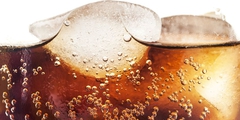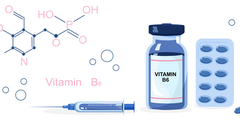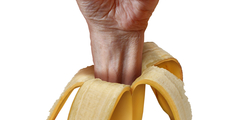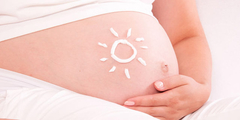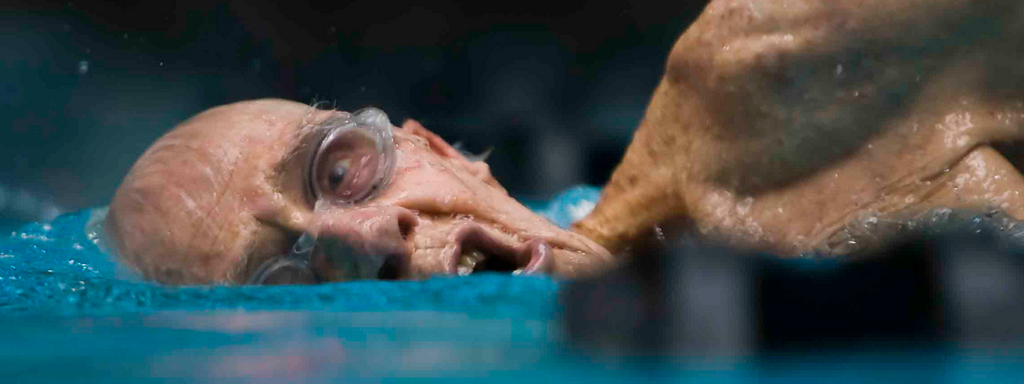
Gezond oud worden gaat niet vanzelf. Zorgen voor voldoende lichamelijke activiteit is essentieel, naast onder meer gezonde voeding en activiteiten gericht op het psychosociale welzijn.1 Verschillende voedingsstoffen versterken de effecten van lichaamstraining en/of verbeteren de lichamelijke conditie waardoor ouderen langer actief kunnen blijven.
Beste bezoeker, u heeft geen toegang.
Enkel (web)abonnees hebben toegang tot tijdschriftartikelen. Het webabonnement is nog in de maak.
U kunt zich wel alvast (gratis) registreren en tal van andere webartikelen raadplegen!
Auteur
Verschenen in
Referenties
1. Gremeaux V et al. Exercise and longevity. Maturitas 2012;73:312-317.
2. Goto S et al. Epigenetic modulation of gene expression by exercise. In: Nutrition, exercise and epigenetics: ageing interventions. Yu BP, ed. Springer 2015.
3. Hank K. How “successful” do older Europeans age? Findings from SHARE. J Gerontol B Psychol Sci Soc Sci. 2011;66(2):230-6.
4. Stathokostas L et al. Longitudinal changes in aerobic power in older men and women. J Appl Physiol. 2004;97(2):781-9.
5. Candow DG. Sarcopenia: current theories and the potential beneficial effect of creatine application strategies. Biogerontolog 2011;12:273-281.
6. Kaminsky LA et al. The importance of cardiorespiratory fitness in the United States. A policy statement from the American Heart Association. Circulation 2013;127:652-62.
7. Nelson ME et al. Physical activity and public health in older adults: recommendation from the American college of sports medicine and the American heart association. Circulation 2007;116(9):1094-105.
8. Sedentair gedrag bij ouderen: sta op voor gezondheid. 2015, Amsterdam: Nationaal Ouderenfonds, VU, Nederlands Instituut voor Sport en Bewegen (NISB). http://www.lasa-vu.nl/nieuws/documents/foldersedentairgedragbijouderenSt...
9. Aoyagi Y et al. Habitual physical activity and health in the elderly: the Nakanojo study. Geriatr Gerontol Int. 2010;10(Suppl. 1):S236–43.
10. Moore SC et al. Leisure time physical activity of moderate to vigorous intensity and mortality. PLOS Med. 2012;9(11):e1001335.
11. Samitz G et al. Domains of physical activity and all-cause mortality: systematic review and dose-response meta-analysis of cohort studies. Int J Epidemiol. 2011;40(5):1382–400.
12. Joshua AM et al. Effectiveness of progressive resistance strength training versus traditional balance exercise in improving balance among the elderly - a randomised controlled trial. Clin Diagn Res. 2014;8(3):98-102.
13. Nagamatsu LS et al. Physical activity improves verbal and spatial memory in older adults with probable mild cognitive impairment : a 6-month randomized controlled trial. J Aging Res. 2013;2013:861893.
14. Cherkas LF et al. The association between physical activity in leisure time and leukocyte telomere length. Arch Int Med. 2008;168(2):154–8.
15. Radak Z et al. Exercise and hormesis: oxidative stress-related adaptation for successful aging. Biogerontology. 2005;6(1):71-5.
16. Robinson S et al. Nutrition and sarcopenia: a review of the evidence and implications for preventive strategies. J Aging Res. 2012;2012:510801.
17. Schilp J et al. High prevalence of undernutrition in Dutch community-dwelling older individuals. Nutrition. 2012;28(11-12):1151-6.
18. Robinson SM et al. Diet and its relationship with grip strength in community-dwelling older men and women: the Hertfordshire cohort study. J Am Geriatr Soc. 2008;56(1):84-90.
19.. Bo H et al. Redefining the role of mitochondria in exercise: a dynamic remodeling. Ann N Y Acad Sci. 2010;1201:121-8.
20. Bo H et al. Mitochondrial redox metabolism in aging: Effect of exercise interventions. J Sport Health Sci. 2013;2(2):67-74.
21. Pozo-Cruz JD et al. Relationship between functional capacity and body mass index with plasma coenzyme Q10 and oxidative damage in community-dwelling elderly-people. Exp Gerontol. 2014;52:46-54.
22. Saito K et al. A significant relationship between plasma vitamin C concentration and physical performance among Japanese elderly women. J Gerontol A Biol Sci Med Sci. 2011;67:295-301.
23. Murase T et al. Suppression of the aging-associated decline in physical performance by a combination of resveratrol intake and habitual exercise in senescence-accelerated mice. Biogerontology 2009;10:423-434.
24. Ryan MJ et al. Vitamin E and C supplementation reduces oxidative stress, improves antioxidant enzymes and positive muscle work in chronically loaded muscles of aged rats. Exp Gerontol. 2011;45:882-895.
25. Shen CL et al. Effect of green tea and Tai Chi on bone health in postmenopausal osteopenic women: a 6-month randomized placebo-controlled trial. Osteoporos Int . 2012;23(5):1541-1552.
26. Shen CL et al. Green tea and bone metabolism. Nutr Res. 2009;29:437-456.
27. Jochmann N et al. Green tea and cardiovascular disease: from molecular targets towards human health. Curr Opin Clin Nutr Metab Care. 2008;11:758-765.
28. Katiyar S et al. Green tea: a new option for the prevention or control of osteoarthritis. Arthritis Res Ther. 2011;13:121.
29. Deutz NE et al. Protein intake and exercise for optimal muscle function with aging: Recommendations from the ESPEN Expert Group. Clin Nutr. 2014;33:929-936.
30. Symons TB et al. The anabolic response to resistance exercise and a protein-rich meal is not diminished by age. J Nutr, Health Aging 2010;15(5):376-381.
31. Cermak NM et al. Protein supplementation augments the adaptive response of skeletal muscle to resistance-type exercise training: a meta-analysis. Am J Clin Nutr. 2012;96(6):1454-64.
32. Katsanos CS et al. A high proportion of leucine is required for optimal stimulation of the rate of muscle protein synthesis by essential amino acids in the elderly. Am J Physiol Endocrinol Metab. 2006;291(2):E381-7.
33. Smith GI et al. Dietary omega-3 fatty acid supplementation increases the rate of muscle protein synthesis in older adults: a randomized controlled trial. Am J Clin Nutr. 2011;93(2):402-412.
34. Rodacki CL et al. Fish-oil supplementation enhances the effects of strength training in elderly women. Am J Clin Nutr. 2012;95(2):428-36.
35. Smith GI et al. The effects of dietary omega-3s on muscle composition and quality in older adults. Curr Nutr Rep. 2016;5(2):99-105.
36. Tiryaki-Sönmez G et al. Omega-3 fatty acids and exercise: a review of their combined effects on body composition and physical performance. Biomed Hum Kinetics. 2011;3:23-29.
37. Houston DK et al. Association between vitamin D status and physical performance: the InCHIANTI study. J Gerontol A Biol Sci Med Sci. 2007;62(4):440-6.
38. Brose A et al. Creatine supplementation enhances isometric strength and body composition improvements following strength exercise training in older adults. J Gerontol A Biol Sci Med Sci. 2003;58(1):11-9.
39. Tarnopolsky M et al. Creatine monohydrate and conjugated linoleic acid improve strength and body composition following resistance exercise in older adults. PLoS One. 2007;2(10):e991.
40. Moon A et al. Creatine Supplementation in the Elderly: is Resistance Training Really Needed? J Nutr Health Sci. 2015;2(2):203.
41. Nielsen FH et al. Update on the relationship between magnesium and exercise. Magnes Res. 2006;19(3):180-9.
42. Chen HY et al. Magnesium enhances exercise performance via increasing glucose availability in the blood, muscle, and brain during exercise. PLoS One. 2014;9(1):e85486.
43. Ryder KM et al. Magnesium intake from food and supplements is associated with bone mineral density in healthy older white subjects. J Am Geriatr Soc. 2005;53(11):1875-80.
44. Lukaski HC et al. Dietary magnesium depletion affects metabolic responses during submaximal exercise in postmenopausal women. J Nutr. 2002;132(5):930-5.
45. Veronese N et al. Effect of oral magnesium supplementation on physical performance in healthy elderly women involved in a weekly exercise program: a randomized controlled trial. Am J Clin Nutr 2014;100:974-81.
46. Mato L et al. Centella asiatica improves physical performance and health-related quality of life in healthy elderly volunteer. Evid Based Complement Alternat Med. 2011;2011:579467.

